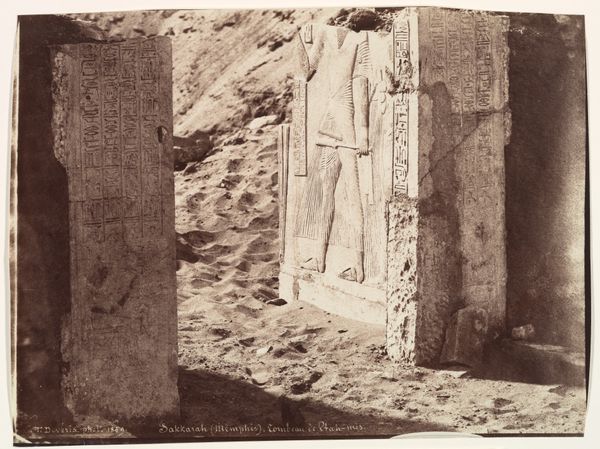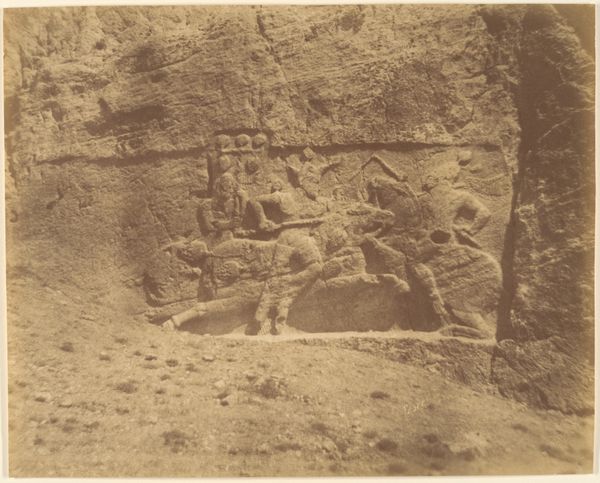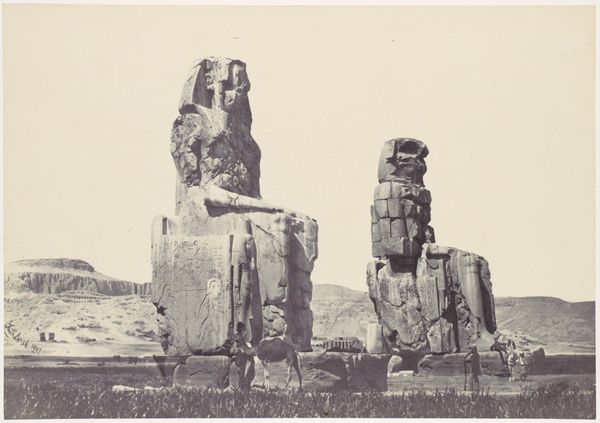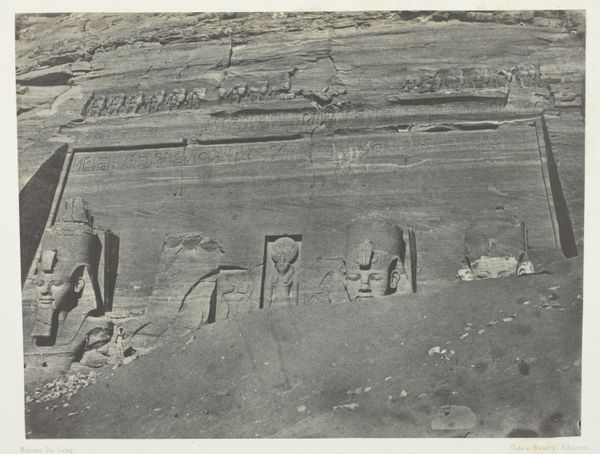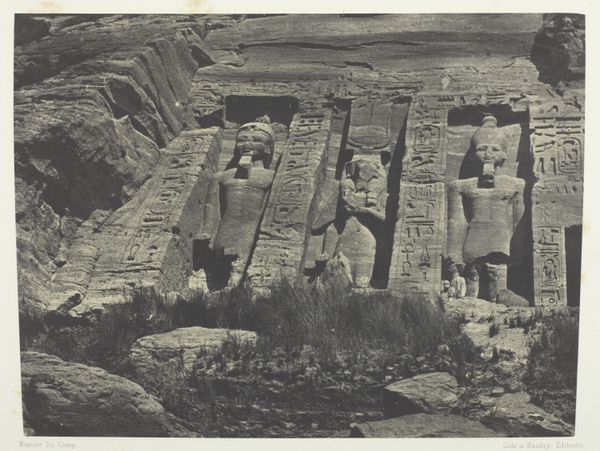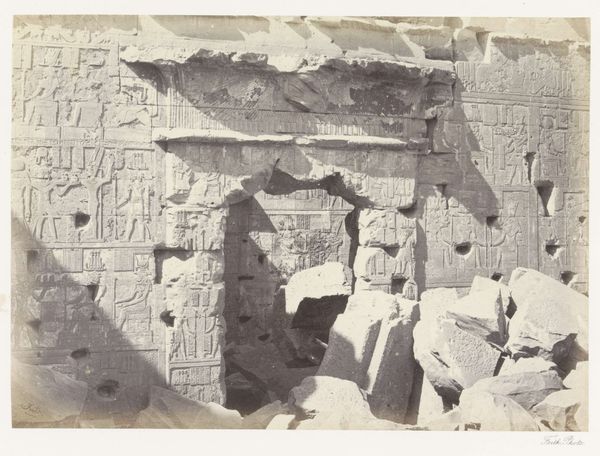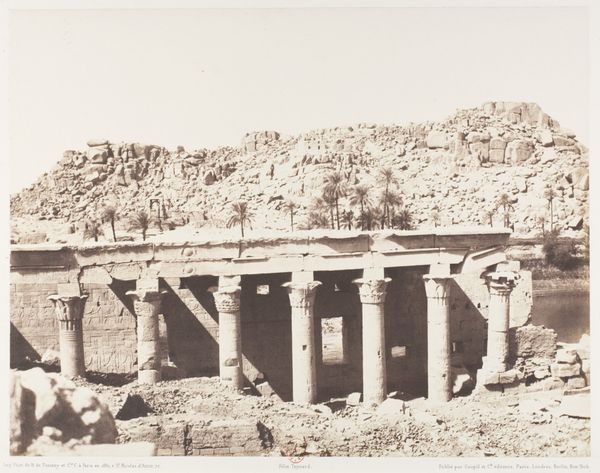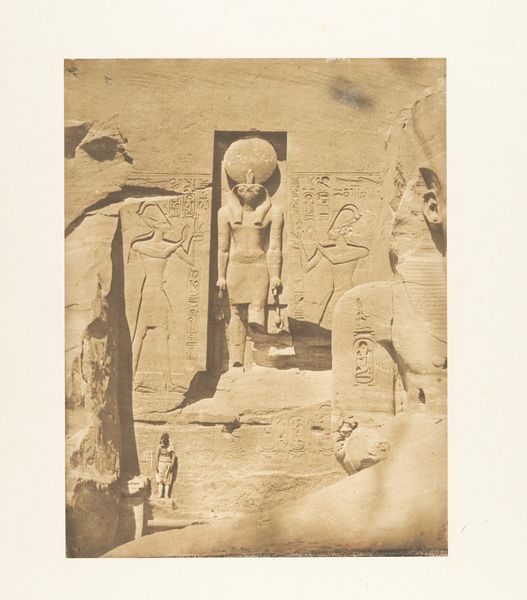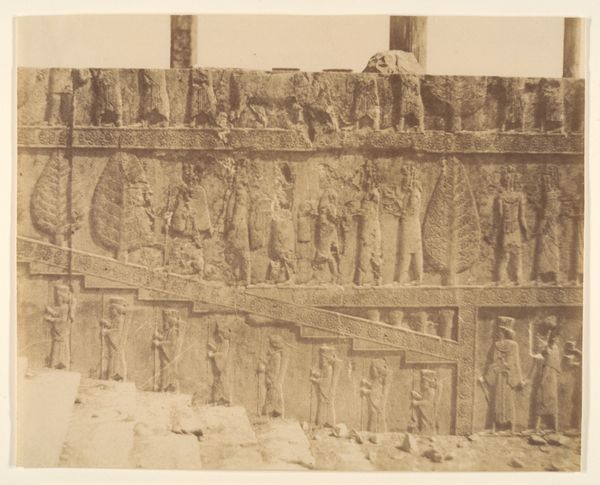
Karnak (Thèbes), Troisième Pylône - Colosse de Spath Calcaire, en D 1851 - 1852
0:00
0:00
photography, sculpture, gelatin-silver-print
#
landscape
#
ancient-egyptian-art
#
photography
#
ancient-mediterranean
#
sculpture
#
gelatin-silver-print
#
history-painting
Dimensions: 24.0 x 30.3 cm. (9 7/16 x 11 15/16 in.)
Copyright: Public Domain
This photograph of a colossal limestone statue at Karnak, Egypt, was taken by Félix Teynard. It's an albumen print, a process invented in 1847 that coated paper with egg white to create a glossy surface. Teynard was a trained civil engineer, and his images reflect that technical precision. Note how the intense sunlight emphasizes the textures of the stone, drawing attention to the colossal scale of the ruins. You can almost feel the weight and density of the limestone. The making of these statues was a monumental task involving quarrying, transporting, carving, and erecting the stones, all by hand. It was a colossal exertion of human labor organized on a vast scale, all for the glory of the pharaohs. Teynard's photograph, in turn, allows us to appreciate the labor involved in this ancient civilization, while also considering the role of photography in documenting and interpreting it for modern audiences. It reminds us that the meaning of any work of art lies not just in its aesthetic qualities, but in the story of its making and the context in which it was created.
Comments
No comments
Be the first to comment and join the conversation on the ultimate creative platform.
